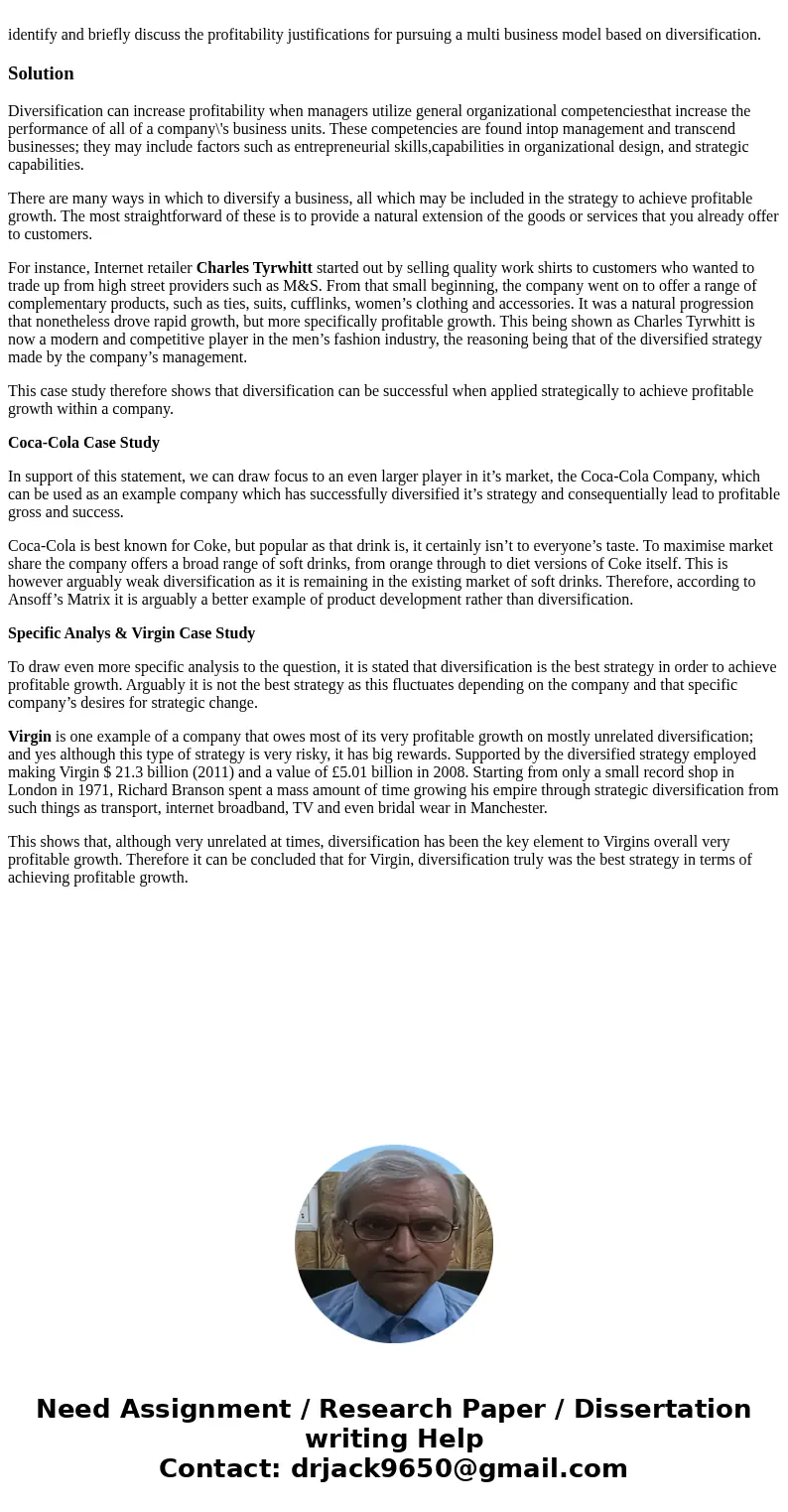identify and briefly discuss the profitability justification
identify and briefly discuss the profitability justifications for pursuing a multi business model based on diversification.
Solution
Diversification can increase profitability when managers utilize general organizational competenciesthat increase the performance of all of a company\'s business units. These competencies are found intop management and transcend businesses; they may include factors such as entrepreneurial skills,capabilities in organizational design, and strategic capabilities.
There are many ways in which to diversify a business, all which may be included in the strategy to achieve profitable growth. The most straightforward of these is to provide a natural extension of the goods or services that you already offer to customers.
For instance, Internet retailer Charles Tyrwhitt started out by selling quality work shirts to customers who wanted to trade up from high street providers such as M&S. From that small beginning, the company went on to offer a range of complementary products, such as ties, suits, cufflinks, women’s clothing and accessories. It was a natural progression that nonetheless drove rapid growth, but more specifically profitable growth. This being shown as Charles Tyrwhitt is now a modern and competitive player in the men’s fashion industry, the reasoning being that of the diversified strategy made by the company’s management.
This case study therefore shows that diversification can be successful when applied strategically to achieve profitable growth within a company.
Coca-Cola Case Study
In support of this statement, we can draw focus to an even larger player in it’s market, the Coca-Cola Company, which can be used as an example company which has successfully diversified it’s strategy and consequentially lead to profitable gross and success.
Coca-Cola is best known for Coke, but popular as that drink is, it certainly isn’t to everyone’s taste. To maximise market share the company offers a broad range of soft drinks, from orange through to diet versions of Coke itself. This is however arguably weak diversification as it is remaining in the existing market of soft drinks. Therefore, according to Ansoff’s Matrix it is arguably a better example of product development rather than diversification.
Specific Analys & Virgin Case Study
To draw even more specific analysis to the question, it is stated that diversification is the best strategy in order to achieve profitable growth. Arguably it is not the best strategy as this fluctuates depending on the company and that specific company’s desires for strategic change.
Virgin is one example of a company that owes most of its very profitable growth on mostly unrelated diversification; and yes although this type of strategy is very risky, it has big rewards. Supported by the diversified strategy employed making Virgin $ 21.3 billion (2011) and a value of £5.01 billion in 2008. Starting from only a small record shop in London in 1971, Richard Branson spent a mass amount of time growing his empire through strategic diversification from such things as transport, internet broadband, TV and even bridal wear in Manchester.
This shows that, although very unrelated at times, diversification has been the key element to Virgins overall very profitable growth. Therefore it can be concluded that for Virgin, diversification truly was the best strategy in terms of achieving profitable growth.

 Homework Sourse
Homework Sourse